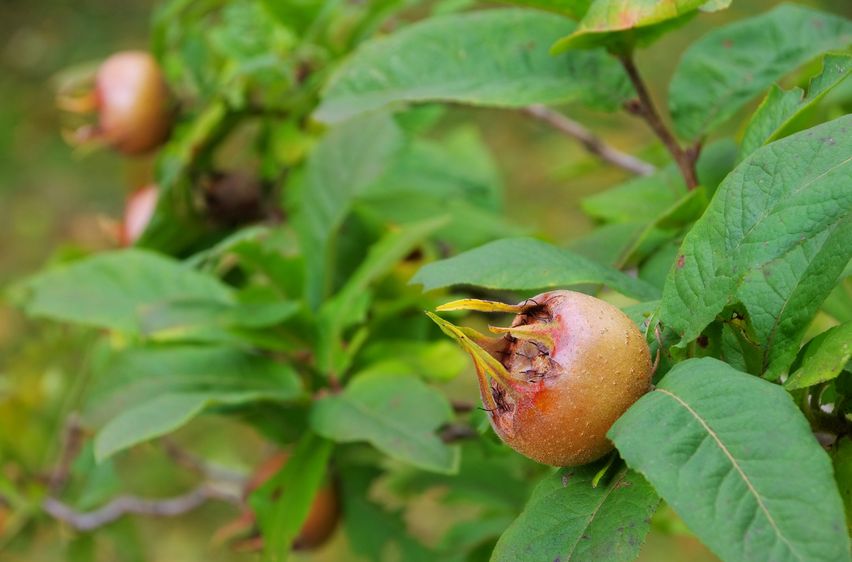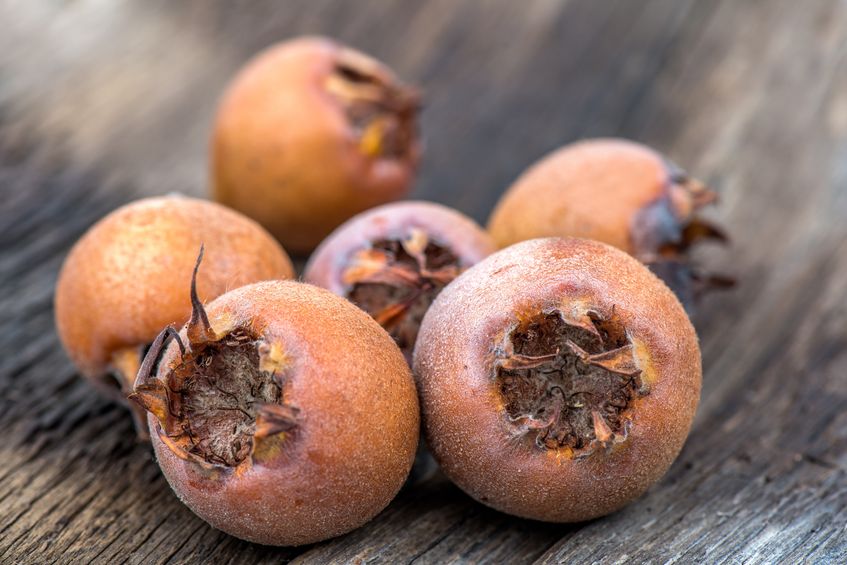Medlar (Mespilus germanica)
The medlar is certainly not a familiar name these days. It is a deciduous tree with a curved trunk and broad crown that bears edible fruit. In the Middle Ages, this species was widespread throughout much of Europe; today, it is mostly found growing wild.

Cultivation – How does it work?
It's best to wait until spring to plant medlars, as this heat-loving fruit tree is very sensitive to low winter temperatures, late frosts, or extreme winter droughts. Therefore, it's best to plant the plants in March/April, or when severe frosts are no longer expected. They're ideal for planting as a hedge or as a small flowering tree. Since medlars are self-fertile, you don't need to pay much attention to pollinator varieties.
Location – Where is best?
Medlars love sunny conditions and will therefore thank you if you reserve a sunny location for them. The soil should be loose, well-drained, warm, loamy, and slightly calcareous. Keep the soil preferably dry, with occasional light moistening.
Care – What needs to be done?
In general, medlars are very robust and undemanding. They require little care or a specific wellness program; just the occasional thinning of the old wood will surely keep them happy.
Harvest – What should you consider?
Your medlars will be ripe for harvesting between the end of October and the end of November. The brown, hairy fruits need some frost exposure to soften and become sweet and sour. Therefore, pick the fruits only after the first real frost. Alternatively, you can pick the medlars while they are still hard and then store them for 10 to 14 days.
You can then conjure up a whole range of delicacies from the harvested medlars. Both raw and cooked, they are suitable for further processing into compote, jam, jelly, juice, or even puree. Apples pair particularly well with medlars. Apple and medlar cake or apple and medlar liqueur are two must-try recipes. Due to their high pectin content, medlars have excellent gelling properties.

Botany – What kind of plant is this?
The medlar is a small tree with furry-brown fruits. These are particularly striking due to their long sepals that remain attached to the fruit. Medlar trees and shrubs often grow somewhat crooked and lopsided. However, some reach an age of 100 years or more. During flowering, a medlar tree is also a true feast for the eyes. The numerous white blossoms then cover the entire tree. The medlar belongs to the rose family.
Cultural history – How did the medlar come to us?
In the Middle Ages, the medlar was widespread in southern and central Europe. It originally came from the Middle East, southeastern, and southern Europe. Driven by Roman settlement, the medlar was finally brought to Central Europe. There, it quickly gained the upper hand in the fruit trees of medieval monastery and farm gardens and enjoyed great popularity everywhere. Even Emperor Charlemagne could not resist and ordered its cultivation on his estates. Due to their high tannin content, the fruits were particularly sought after, as they reduced the cloudiness of wine, apple, and pear juice and also improved their shelf life. However, the medlar is only suitable for processing into jam or compote, for example, after a few nights of frost. This is necessary to break down the tannins and transform the previously hard fruits into soft, aromatic, fruity fruits. Once ripe, medlars have a limited shelf life and lose their valuable nutrients very quickly.
Varieties – Which are recommended?
The most popular varieties include:
- Hungarian: Shrubby growth; weak; early ripening (September); very productive
- Nottingham: medium-strong growth; early ripening; yellowish fruits with dark flesh; for moist soils
- Dutch large-fruited: vigorous growth; high yield; large and aromatic fruits; laurel-like leaves
- Seedless: medium-strong growth; high yield; small, tasty, seedless fruits
- Macrocarpa: vigorous; large-fruited
- Royal: shrubby growth; medium strength; high yield
TEXT: Carina Naeve













